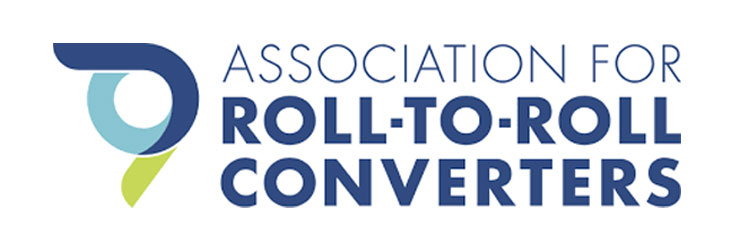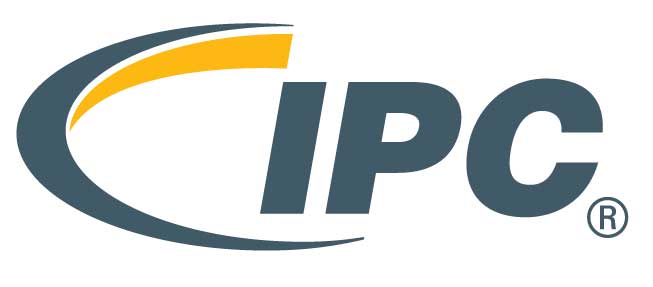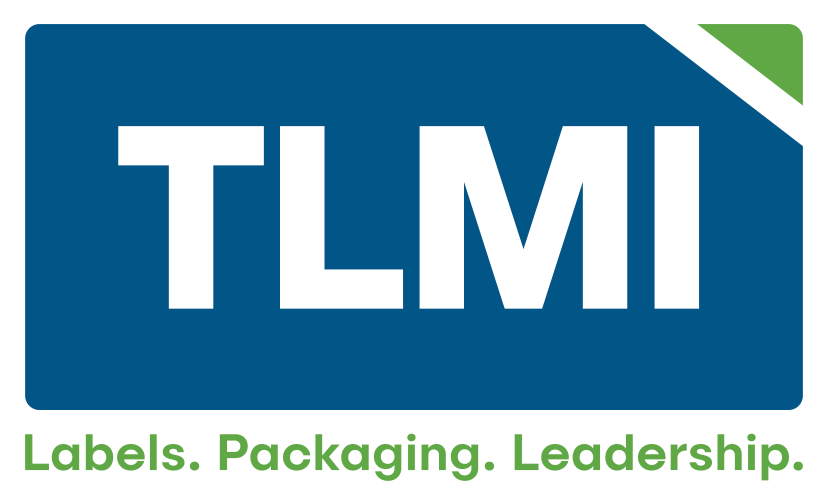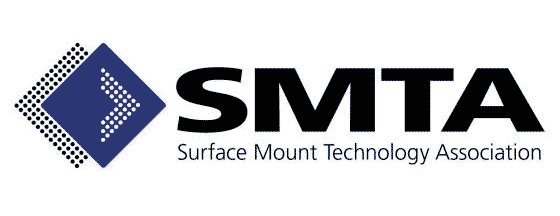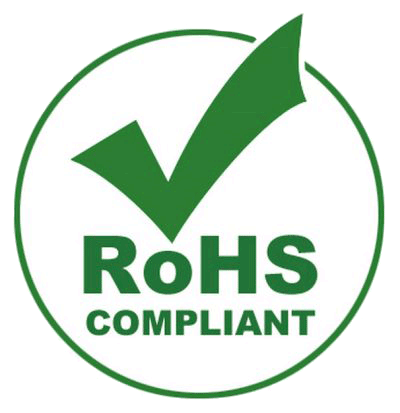Are you familiar with the above words? These words are not words that are thrown out in everyday conversation. Well, maybe not in your everyday conversations but in this line of work, we use them all the time. Terminology related to harsh environment labeling issues can sound like a foreign language, and we want to provide you with answers, not leave you with questions.
If you have a question about some of the terminology we use everyday, just look for the answers at left. If you cannot find the answer you're looking for in here, feel free to e-mail us or head over to the Contact Page and fill out our convenient form. Be sure to bookmark this page for your future reference, or just to impress your friends with your knowledge of "Plasticizer Migration".
| Term | Definition |
|---|---|
| Abrasion Resistance | The ability of a tape or label to withstand rubbing and still function satisfactorily. |
| Accelerated Aging | A means whereby the deterioration of a tape or label encountered in natural aging may be accelerated and reproduced in the laboratory. |
| Accelerated Weathering (weathering) | A means whereby the deterioration caused by outdoor exposure may be accelerated and reproduced in the laboratory. |
| Acetate (cellulose acetate): | A transparent film that is used for various reasons in tape backings; the primary characteristic is that of being more moisture resistant than cellophane. |
| Acrylic | A synthetic polymer with excellent aging characteristics that can be used as either a single component adhesive or a coating or saturant, depending upon composition. |
| Adhesion | A measurement of the force required to remove a label from a substrate. Peel strength.Several test methods normally characterize this force at various time intervals after application to various substrates. A bond produced between a pressure sensitive adhesive and a surface. |
| Adhesion build-up | An increase in the peel adhesion value of a pressure sensitive tape after it has been allowed to dwell to the applied surface. |
| Adhesion to backing | The bond produced by contact between a pressure sensitive adhesive and the tape backing when one piece is applied to the back of another piece of the same tape. |
| Adhesive | A substance capable of holding materials together by surface attachment. Any material that will usefully hold two or more objects together solely by intimate surface contact. |
| Adhesive, Cold Temperature | An adhesive that will enable a PS label to adhere when applied to refrigerated frozen substrates, generally + 35 degrees F or colder. |
| Adhesive deposit | Adhesive that is pulled away from the tape and remains on the surface to which the tape was applied. |
| Adhesive failure (primary) | The debonding of the adhesive from the face material. |
| Adhesive failure (secondary) | The debonding of the adhesive from the substrate. |
| Adhesive, High Temperature | An adhesive that will enable a PS label to withstand sustained elevated temperature (+200 degrees F or higher). |
| Adhesive mass | Sometimes used as another name for the adhesive. |
| Adhesive Permanent | A PS adhesive characterized by having relatively high ultimate adhesion. The label either cannot be removed intact or requires a great deal of force to be removed. One measure is that the force required to remove the adhesive is greater than the tensile strength of the label, or the tear strength of the product surface. For example, a label, which is firmly attached to a plastic surface, but which can be removed from it, intact, may be considered to be non-permanent for that application; however, that same label may destroy the surface of a cardboard box by ripping up fibers, i.e. the force to destroy the label is greater than that of the box surface. |
| Adhesive Removable | A PS adhesive characterized by low ultimate adhesion. The label can be removed from most substrates without damaging the surface or leaving a residue surface or leaving a residue or stain. |
| Adhesive residue | See Adhesive Deposit. |
| Adhesive transfer | The transfer of adhesive from its normal position on the tape to the surface to which the tape was attached, either during unwind or removal. |
| Ambient Temperature | Normal fluctuating temperatures in an environment which are not closely controlled, e.g. in a typical warehouse, boxcar, office building, etc. |
| American Society for Testing and Materials (ASTM) | An organization that tests materials to certain standards and requirement. |
| Application Temperature | Temperature of a substrate or label material at the time the label will be applied. All Fasson adhesives have a minimum application temperature rating. Testing is recommended when approaching minimum application temperature. |
| ASTM D1000 | The standard that governs Pressure-Sensitive Adheisve-Coated Tapes Used for Electrical and Electronic Application and Material Thickness. |
| ASTM D330 | The standard that governs Peel Adhesion for Pressure Sensitive Tape. These test methods cover the measurement of the peel adhesion of pressure-sensitive tapes. Test method A gives a measurement of adherence, when peeled at 180° angle, to a standard steel panel or to other surface of interest for a single coated tape. |
| ASTM D2979 | Governs Pressure Sensitive Tack of Adhesives. This test method covers measurement of the pressure sensitive tack of adhesives. This test method is applicable to those adhesive which for a bond of measurable strength rapidly upon contact with another surface and which can be removed from that surface cleanly, that is, without leaving a residue visible to the eye. Tack may be measured as the force required to separate an adhesive and the adhered at the interface shortly after they have been brought into contact under a defined load of known duration at a specified temperature. |
| Backing | A relatively thin flexible material to which the adhesive is applied. Theoretically, any material that is reasonably flat, relatively thin, and flexible could be used as a tape backing. |
| Basis Weight | The weight of a ream of paper. Traditional version is given in pounds per ream, such as 40# release liner. The modern version is given in grams per square meter. |
| Bi-Directional | Related to strapping tapes, in which the reinforcing material consists of filaments in both the length and cross directions, usually a woven cloth. |
| Bleaching | An erroneous term used to denote a condition of the surface under a tape that has remained the original surface color while the surrounding exposed area has discolored. |
| Bleeding | Penetration through the tape of a coloring liquid(paint, etc.) onto the surface to which the tape is applied. |
| Bond | The adhesion of a pressure-sensitive adhesive tape to the surface to which it has been applied. |
| Bursting strength | The ability of a tape to resist damage when force is applied evenly perpendicularly to the surface of the tape |
| Butt Cut Labels | Labels separated by a single cross-direction cut to the liner. No matrix area exists between labels. Butt cut labels are not suitable for automatic dispensing. |
| Calendar | A process by which a web of material is subjected to being squeezed and “ironed” under high pressure and heat. The effect is to compact or densify the material, as well as smooth it. |
| Carrier | Sometimes used to refer to the backing material, particularly in double-faced tapes. |
| Cast Coated | Coated paper dried under pressure against a polished cylinder produce a high-gloss finish to the paper. |
| Cellophane (regenerated cellulose) | A thin transparent film manufactured from wood pulp. |
| Clear Coat | A varnish. A coating that protects the printing and the surface of a pressure-sensitive label from abrasion, sunlight, chemicals, moisture, or a combination of these. |
| Coated Cloth | Fabric with a rubber or plastic back coating to give increased moisture resistance and longer wear. |
| Coating | A material, usually liquid, used to form a covering film over a surface. Its function is to decorate and or protect the surface from destructive agents or environment, to render a surface printable, or some other purpose. |
| Coating Weight | The amount of weight of coating (normally adhesive) per unit area. This can be expressed as grams per square meter or pounds per ream. |
| Cohesion (cohesive strength, internal bond) | The ability of the adhesive to resist splitting. Good cohesion is necessary for clean removal. |
| Cohesive failure | The splitting of the adhesive itself. This means there is adhesive on the substrate and the surface it was adhered to. |
| Cold Flow | The tendency of a pressure sensitive adhesive to act like a heavy viscous liquid over long periods of time. Such phenomena as oozing and increases in adhesion are the result of this characteristic. |
| Color | The particular color of a tape, when looking at the backing, regardless of the color of the adhesive. |
| Color separation | In photography, the process of separating color originals into the primary printing color components in negative or positive form. In lithographic platemaking, the manual separation of colors by handwork performed directly on the printing surface. An artist can pre-separate by using separate overlays for each other. |
| Color stability | The ability of a tape to retain its original color, particularly when exposed to light. |
| Conformability | The ability of tape to fit snugly or make essentially complete contact with the surface of an irregular object without creasing or folding. |
| Conformal coating | Materials applied in thin layers onto printed circuits or other electrical substrates. The protect electronic circuit boards from moisture and contaminants preventing short circuits and corrosion of conductors and solder joints. |
| Coupon Base | A splittable film product with adhesive and protective liner. When used in combination with another pressure-sensitive coated facestock affords the label converter the capability of manufacturing on press a redemption coupon that has a lift tab and is printed on both sides. A clear film remains on the labeled item after the coupon has been removed. |
| Creep | A slow movement of the adhesive or backing under stress. |
| Creped | Paper that has small "folds" in it, giving it high stretch. |
| Cross-linked | The development of a three-dimensional structure in an adhesive, which is activated normally by heat. An improvement in shear resistance, high temperature resistance, and oil or solvent resistance will normally result. |
| Cupping | A slight U-shaped deformation of the tape (at right angles to the length) which usually appears after unwind tension is relaxed. “Canoeing”. |
| Cure | To change the properties of an adhesive by chemical reaction or heat alone or in combination without pressure. |
| Curling | The tendency of a tape to curl back on itself when unwound from the roll and allowed to hang from the roll. |
| Dead stretch | The net increase in length after tape has been elongated without breaking and allowed to recover. |
| Delamination | A separation of splitting of the tape such as separation of the backing into two distinct layers, separation between laminations of a tape consisting of more than one backing, or the separation between filaments and backing of a filament-reinforced tape. |
| Delayed stain | See Latent Stain. |
| Die | Any of a variety of tools or devices used for cutting material to a desired shape. |
| Die Cut | The line of severance between a pressure-sensitive label and its matrix or adjoining label made by the cutting edge of a die. |
| Die Cut Label | Pressure-sensitive labels mounted on a release liner from which the matrix has been removed. |
| Dielectric Strength | A measure of the electrical strength of a material as an insulator. Dielectric strength is defined as the maximum voltage required to produce an electrical breakdown through the material and is expressed in volts per unit thickness (mils). The higher the dielectric strength of a material the better its quality as an insulator. |
| Discoloration | See stain. |
| Dishing | See telescoping. |
| Dots per inch (DPI) | A measure of resolution used for printed text or images. The more dots per inch, the higher the resolution. |
| Double Coated | The adhesive is applied on both sides of the backing, which serves principally as a carrier for the adhesive. |
| Edge Curl | The peeling back or lifting of the outer edge of a tape which has been applied in a curve. The peeling back or lifting of the outer edge of a tape after application. See Cupping. |
| Edge Lift | The tendency of the edge of a label to rise off the surface of the substrate. This condition occurs most frequently on small diameter curved surfaces. Resistance to edge life is dependent on the bond strength of the adhesive and the flexibility of the facestock. |
| Elastic memory | A tendency of some tape backings to attempt to return to their original length after being elongated. |
| Electrolytic Corrosion Factor | A measure of the tape,s corrosive effect on a copper conductor. This is particularly important selection of tapes for use as electrical insulation. |
| Electronic Data Processing | Data processing by electronic equipment. Pressure sensitive labels produced for imprinting on this equipment incorporate line hole punching and perforations. |
| Elongation | Process of growing or increasing in length. |
| Embossed Finish | Paper with a raised or depressed surface resembling wood, cloth, leather or other pattern. |
| Embossing | Impressing an image in relief to achieve a raised surface; either overprinting or on blank paper (called blind embossing). |
| Exposure Temperature | The temperature that a labeled product is exposed to. |
| Face Sheet | Any material, including paper, film, fabric, laminated or solid foil, suitable for converting into PS label stock. |
| Face Stock | Any material, including paper, film, fabric, laminated or solid foil, suitable for converting into PS label stock. |
| Fall-off | Tape pulls completely away from the surface to which applied and drops off. |
| Fan Fold | Zig-zag fold. The put-up of pressure-sensitive labels on a continuous backing in such a way as to form a flat pack as different from roll form. |
| FDA | Food and Drug Administration. Regulations for PS applications apply to the following area: Adhesives: (1) Direct food contact, such as labeling of fruit and vegetable with an edible skin (175.125); (2) Indirect food contact, where incidental between an adhesive and a food may be possible (175.105). Facestocks: (1) Contact between paper and dry foods (175.180); (2) Contact between paper and aqueous and/or fatty foods (176.170). |
| Feathering | A jagged irregular paint line frequently characterized by small "feathers" of the top-coat projecting into the masked area. |
| Filaments | Thin longitudinal "threads" of glass, polyester, nylon, or other high-strength materials. |
| Film | Uniform, homogeneous, nonfibrous synthetic webs. |
| Films | Acetate, polyester, polyethylene vinyls and other polymeric. Face material manufacturing from synthetic high molecular weight polymers. |
| Finish | The surface property of a film determined by its texture and gloss. A gloss finish, for example, can be shiny and highly reflective, while a matte finish is generally dull and reflects little light. |
| Fisheyes | Tapes relative to PSA aesthetics-Relatively small deformations (pock marks) in the adhesive caused by the entrapment of air between layers in the roll. They are not an indication of a quality defect. |
| Fish eyes | Coatings.Round or oval deformation in an adhesive, coating, or ink. Indicative of either surface contamination, or of "non-wetting" of a surface by an adhesive, ink, or coating because of surface tension problems. Surface defect for quality problem. |
| Flagging | A peeling away from the surface of the end of a length of tape, particularly in a spiral-wrap application. |
| Flaking | A condition sometimes occurring during removal of masking tape, in which flakes or particles of paint break off the tape backing. |
| Flame Resistance | The ability of a tape to withstand exposure to flame. Fireproof materials will not burn even when exposed flame. Flame-resistant (fire-retardant, self-extinguishing) materials will burn when exposed to flame but will not continue to burn after the flame is removed. |
| Flame Retardent | A material that resists burning when exposed to a flame. See also self-extinguishing. |
| Flash Exposure | How hot can a material get for the shortest amount of time before failure. |
| Flatback | Smooth paper backing. |
| Flexibility | The ability of a tape to be bent or flexed freely. |
| Flexographic Printing | A method of rotary letterpress printing. |
| Fluorocarbon Films | A film with very high and low temperature limits, excellent electrical characteristics, and a very slippery, non-sticking surface. One example is Du Pont,s Teflon, (polytetrafluorethylene). |
| Fluting | Distortion of a roll of tape such that layers no longer form a circle. |
| Flux | A chemical or substance used to help facilitate the flow of solder. Can be applied before the wave soldering process and after cleaning. |
| Foam | A soft, cushiony material formed by creating bubbles in base material, such as natural or synthetic rubbers, or other elastomeric materials. |
| F.O.B. | Free on board. Indicates that a quoted price includes loading on a railroad car or truck at the designated point, but no further transportation cost are included. |
| Food contact adhesives | Adhesives meeting specified sections of the Food & Drug Administration Code of Federal Regulations. These regulations cover direct food labeling as well as incidental contact. Special product recommendation are necessary for specific applications. |
| Freezing | A hardening or crystalizing of the adhesive after application so that tape cannot be removed easily or cleanly. |
| Gapping | Openings between layers of tape within a roll. |
| Ghosting | See Offsetting. |
| Glassine | A kraft paper, which is highly calendered, so that it is smoother and more dense than SCK. |
| Gloss | A subjective term used to describe the relative amount and nature of mirrorlike (SPECULAR) reflection. Different types of gloss are known as sheen, distinctness-of-image gloss, etc. Terms widely used ar: FLAT (or MATTE)-practically free from sheen, even when viewed from oblique angles; EGGSHELL-semi-gloss; FULL GLOSS-smooth and mirrorlike surface when viewed from all angles. Instruments known as glossmeters are available to measure gloss from three different angles: 20, 60, and 85 degrees from normal. Gloss is measured against an arbitrary scale of 1000 for a perfect mirror. Polished plate glass has a gloss value of 100 on that scale. ASTM has developed a variety of test methods for testing gloss levels of many different coatings and materials. |
| Grain | The machine direction of paper as opposed to the cross direction. Also, a measurement of pressure-sensitive adhesive on a given area. |
| Gravure Printing | A printing process that employs minute engraved wells. Deeply etched wells carry more ink that a raised surface, hence print darker value shallow wells are used to print values. A doctor blade wipes excess ink from the cylindrical printing surface. |
| Halogen | Any of a group of five chemically related, non metallic elements; Fluorine, Chlorine, Bromine, Iodine & Astatine. |
| Haze | A degree of cloudiness in a plastic material. |
| Heat Resistance | The ability of a tape to withstand exposure to specified temperatures after application to a surface. Clean removal after exposure may or may not be important depending on the intended function of the tape and the type of adhesive. |
| High Speed Unwind | Unwinding or dispensing of tapes at a relatively high rate of speed, usually more than 50, feet per minute |
| High Temperature Adhesive | An adhesive that will enable a pressure-sensitive label to adhere or stick well when applied to a hot substrate and has a high degree of resistance to aging or deterioration at elevated temperatures. |
| Holding Power (shear adhesion) | The ability of a tape to resist the static forces applied in the same plane as the backing. Usually expressed in a time required for a given weight to cause a given amount of tape to come loose from a vertical panel. |
| Holiday | A small defect, particularly in an electrical or pipe wrapping tape, that lowers the dielectric strength at the point of the defect below a certain desired minimum. |
| Hot Melt (pressure sensitive adhesive) |
A pressure sensitive adhesive, applied to the backing in a hot molten form, that cools to form a conventional pressure sensitive adhesive. |
| Hot Stamping | A decorating process in which the desired image is transferred to a substrate by a heated, positive copy die. Images are normally limited to one color positive copy line. |
| Hydro-Carbon | Any of a numerous organic compounds such as Benzene and Methane that contain only Carbon and Hydrogen. |
| Impact Printing | Any printing systems where a micro processor controlled drives a ribbon into contact with the print surface (dot matrix) or the print surface into contact with the ribbon (drum printer). |
| Impact Resistance (shock resistance) | The ability of a tape to resist sudden pulls or shocks as may sometimes be encountered by packages in transit. |
| Initial Track | Adhesives usually have two adhesive stages: (1) Initial tack at which time it is sticky enough to hold parts together; (2) Set at which point the adhesives has firmly bonded them. |
| Injection Blow Molding | A molding procedure whereby a heat softened plastic is forced from a cylinder into a relatively cool cavity which gives the article the desired shape. |
| Ink Jet | A method of printing using liquid ink projected a drop at a time against a substrate. |
| Insulation Resistance | The ability of a tape to prevent the flow of current across its surface, usually measured on the backing. |
| Insulating tape | Normally refers to tape used for electrical insulation. |
| Kapton Label Material | DuPont,s brandname for its polyimide label material. See Kapton Label Products |
| Kiss-Cut | Kiss-cutting refers to a die cutting method where the die cuts through the laminated material and adhesive and stops before rupturing the liner. In this process the waste matrix is often removed. |
| Kraft | A sulfate wood pulp paper. See Saturation. SCK. Glassine |
| Label Stock | Pressure sensitive materials that are usually printed, frequently die-cut, furnished in roll or sheet form with a liner, and intended for use as labels. |
| Lamination | A combination of two or more similar or dissimilar materials that function as one backing, for example, acetate and tissue in acetate fiber tapes. |
| Latent Stain | A stain in a surface to which tape has been applied, which does not become noticeable until some time after removal, usually after the surface has been exposed to sunlight or heat. |
| Lifting | A situation where a section of tape has pulled away from the surface to which it has been applied. |
| Liner Side | In roll form it is referred to that side of the roll protected by a release liner. |
| Luster | Gloss of a finish. See Gloss |
| Machine Direction | The direction of a web of material as it flows through a coater, laminator, or printing press, resulting in a roll of material. Also known as "with the web", as opposed to "against the web" (see Transverse Direction). |
| Magenta | One of the four primary colors for printing. One of the subtractive primaries the hue of which is used for one of the four color process inks. It reflects blue and red light and absorbs light. |
| Mass | Sometimes used as another name for the adhesive. |
| Matrix | Ladder, skeleton, waste. The face and adhesive layers of a sensitive construction surrounding a die-cut label which have been removed after die-cutting. |
| Matte Finish | A dull finish. A deglossed surface. |
| Memory | The property of a material that attempts to return to its original dimensions after being distorted. |
| Metallized Film | A plastic or resinous film that has been coated on one side with a very thin layer of metal. |
| Metal Foil | Thin, flexible sheets of metal, such as aluminum and lead, used as tape backings because of inherent properties such as weather resistance, reflectivity, etc. |
| Microns | A measure of thickness from the metric system. One micron is 1 millioneth of a meter. |
| Migration | The movement of one or more of the components of a pressure-sensitive adhesive to either a substrate or face material; the movement of one or more of the components of either or both the face material and the substrate into the adhesive and ink. The movement, over a long period of time, of an ingredient from one component to another when the two are in surface contact. May occur between tape components or between a tape and the surface to which it is applied. Some plastic films and foams contain plasticizers which are apt to migrate into the tape adhesive, causing the adhesive to soften. |
| Mils | A measure of thickness used in describing film,adhesive, or other coating thickness. The term means thousandths of an inch. |
| Mineral Spirits | A Petroleum distillate commonly used as a paint thinner and mild solvent- can be used for cleaning/degreasing machine tolls and parts. |
| Minimum Application Temperature | The lowest temperature at which an adhesive will function. |
| Moisture Content | Percent moisture. The moisture present in a material, as determined by specified methods. |
| Moisture Resistant | That property of a sheet which resists uptake or passage of moisture. Usually achieved by adding sizing. |
| Mottled | Non-uniform coloring, coating or printing of a face material. |
| Multiple Component Adhesive | A pressure sensitive adhesive containing one or more elastomers combined with resins and other components that impart tack, adhesion, and other necessary properties. |
| Natural Colored | Applied to papers whose colors result from the nature of the stock used when no bleach or coloring has been added. In the case of kraft, its natural color is a tan or light brown. |
| Natural Resins | The products obtained from the exudations of trees and sometimes used as adhesive, coatings or sealer bases. Common natural resins are the copals, damar, shellac accroides, sandarac, rosin and mastic. |
| Natural Rubber | Derived from the latex of rubber trees. It imparts tack and adhesion properties to pressure-sensitive adhesives. |
| Non-Impact Printing | This encompasses various print processes including Thermal (direct and indirect), Ink Jet and Toner. |
| Non-Woven | A manufactured sheet, web or batt of directionally or randomly oriented fibers, bonded by friction and/or cohesion and/or adhesion, excluding paper and products that are woven, knitted, tufted, stitch bonded incorporating binding yarns or filaments, or felted by wet milling. |
| Nylon | A strong plastic that can be used as a film with high oil and gas resistance or used as filament in strapping tapes, with high impact resistance. |
| Off-Core | Layers of tape are in correct alignment, but tape is displaced sideways on core. |
| Offsetting | Occurs when a printed tape is unwound and some of the printing ink is picked off by the adhesive or migrates into the adhesive. It is, in effect, a delamination of the ink. |
| Oozing | A "squeezing out" of the adhesive from under the backing, occurring when the tape is in roll form, the edges of the roll become tacky. |
| Opacity | Property of a paper/film (AKA hiding power) which prevents show through of dark printing or in contact with the backside of the sheet (opposite of transparency). |
| Opaque ink | Ink that conceals all color beneath it. |
| Opaqueness | The ability of a tape to prevent the transmission of light. |
| Outgassing | To remove embedded gas from a solid, as by heating/ reducing the pressure. |
| Overlaminating | Application of clear film to a graphic for the purpose of protection or to enhance the graphic quality. |
| Overlap | Wrap-around labeling of a container in which one end of the label overlaps the other. Pattern Coating: Refers to the width and spacing arrangement of adhesive laid down parallel to machine direction, across the width of a pressure-sensitive stock, during its manufacturing. |
| Paint Line | The line between a tape-masked surface and a painted or otherwise treated surface. |
| Pattern Gum | An adhesive coating that alternates strips of adhesive/no adhesive parallel to the machine direction. The areas of no adhesive are frequently used as "lift-tabs" for order-picking type labels. |
| Peaking | Large singular upheavals in the outer layers of a roll of tape. |
| Peel Adhesion | The force per unit width required to break the bond between a tape and a surface when peeled back, usually at 180 degrees at a standard rate and condition. |
| Penetration | Bleed though. Change of appearance of the face material due to movement of one or more components from the adhesive or the substrate. |
| Penetration Resistance | The ability of a tape to resist slow puncture under pressure. |
| Perforation | Series of small cuts made in labels and/or their release liner to facilitate tearing along a predetermined line. |
| Permanent Adhesive | An adhesive characterized by having relatively highly ultimate adhesion to a wide variety of surfaces. |
| Pick | That quality of paper as its relates to the tendency of fibers or particles to be pulled away from the sheet surface when removed from tacky surfaces such as printing plates. |
| Picking | The lifting of the paper surface during printing. It occurs when pulling force (tack) of ink is greater than surface strength of paper. |
| Pigment | In printing inks, the fine solid particles used to give color, or opacity. |
| Pinhole | A very small hole that may permit the passage of light, moisture, or electrical current. |
| Plain Cloth | Fabric woven from cotton, glass, or other fibers without further treatment. |
| Plasticizer | Softener. A substance added to materials to impart flexibility, workablilty and elongation. |
| Plasticizer Migration | Loss of plasticizer from an elastomeric compound that is absorbed into the adhesive. The result is a softening of the adhesive to the point of adhesion failure. |
| Polyester | A strong film having good resistance to moisture, solvents, oils and many other chemicals. It is usually transparent. |
| Polyethylene | An extruded, tough stretchy film having limited temperature resistance but good moisture barrier properties. Good for low temperature applications. |
| Polyimide | A strong, tough engineering film which resists deformation or decomposition at temperatures in excess of 500 degrees F for many hours. As such, it provides a stable base for polyimide label stock for polyimide labels in barcode applications. |
| Polymer | Any of numerous natural and synthetic compounds of usually high molecular weight consisting of up to millions of repeated linked units, each a relatively light and simple molecule. |
| Polypropylene | A polyolefin plastic similar in properties to polyethylene but with higher temperature capability and greater strength. A cousin of polyethylene, with generally similar properties, but stronger and having a higher temperature resistance. |
| Polystyrene | A water-white thermoplastic produced by the polymerization of styrene. The electrical insulation properties of polystyrene are outstandingly good and the material is relatively unaffected by moisture. |
| Polythene | Trade name for polyethylene available in films or as custom molded articles. |
| Polyvinylidene Chloride | A usually very thin transparent film with excellent resistance to acids, water, and organic solvents. |
| Porosity | A measure of the amount of microscopic holes in a surface.The property of adhesive absorption by the adherent surface. |
| Post Cure | The phenomenon peculiar to radiation curing. Whereas, exposure to ultraviolet radiation will continue to react chemically for a period of minutes to hours after exposure. |
| Pressure Sensitive | A term commonly used to designate a distinct category of adhesive tapes and adhesives, which, in dry (solvent-free) form, are aggressively and permanently tacky at room temperature and firmly adhere to a variety of dissimilar surfaces upon mere contact without the need of more than finger or hand pressure. They require no activation by water, solvent, or heat to exert a strong adhesive holding force toward such materials as paper, plastic, glass, wood, cement, and metals. They have a sufficiently cohesive holding and elastic nature so that, despite their aggressive tackiness, they can be handled with the fingers and removed from smooth surfaces without leaving a residue. General trade usage by leading tape manufacturers does not sanction extension of the term "pressure sensitive" to embrace tapes and adhesives merely because they are sticky (e.g., fly-papers), or merely because they adhere or cohere to a particular type of surface (e.g. self-sealing envelopes); terms other than "pressure sensitive" should be used in such cases to avoid confusion. |
| Pressure Sensitive Tape | A combination of a pressure sensitive adhesive and a backing. |
| Priming | Coating the backing on the adhesive side with a thin layer of adhesive-like material that serves as a bonding agent between the adhesive and the backing. |
| Printability | The ability of a tape, tag, or label to accept and hold a printed legend and especially to resist offset of the printing when rewound into a roll after printing. |
| Printing | For labels, the accepting and holding of a printed image. For Tape:The pattern of a tape left on a surface after tape has been removed. Most apt to occur when tape is applied to a freshly painted surface that has not fully hardened. |
| PSI | Pounds per square inch. |
| Puckering | The uneven, non-flat condition of masking paper to which tape has been applied. |
| Quick Stick (tack, finger tack, initial adhesion, wet grab) | The property of a pressure sensitive adhesive that allows it to adhere to a surface under very light pressure. It is determined by the ability of the adhesive to wet the surface contacted quickly. |
| Ream | Five hundred sheets of paper. |
| Recovery | The difference between ultimate elongation and dead stretch. |
| Recycle | Ground material from flasit and trimmings which after mixing with a certain amount of virgin material is fed back into the blow mold machine. |
| Register | The exact corresponding placement of successively printed and/or die-cut pressure-sensitive labels. |
| Reinforcements | A material added to a tape to provide additional strength. |
| Release | The force required to remove the release liner from the facestock at a specified speed and angle. |
| Release Coat: Release lacquer | The release liner treatment material that allows pressure-sensitive labels to release from the release liner. |
| Release Coating (easy unwind treatment) |
A coating applied to the backing on the side opposite the adhesive that provides ease of unwind and prevents delamination or tearing. |
| Release Coat Transfer | Particles of the release coat stick to the adhesive on unwind; the resulting tape will have little or no ability to stick. |
| Release Liner: Backing. Liner lining | The portion of the label that receives the release coating. Prior to application, it protects the adhesive and provides support for the facestock during the die cutting operation and allows the label to be transported to a label applicator or through a computer printer. A web or sheet of material covering the adhesive side of a tape. It is removed prior to application. Most frequently found on double-coated tapes and label stocks. |
| Removable Adhesive | A pressure-sensitive adhesive characterized by low ultimate adhesion to a wide variety of surfaces, that can be removed without damage to either the label or the substrate. |
| Removal | The act of pulling tape away from the surface to which it has been applied. |
| Residue | Adhesive left on a substrate when a label is removed. See Adhesive Residue. |
| Resilience | Capability of a sealer or coating to return to its original size and shape after deformation. |
| Resin | A general term applied to natural and synthetic polymers, amorphous in structure and without fixed melting point characteristic. |
| Resistance to Weather, Solvents, Acids, Alkalies, Oils, Greases, etc. |
The ability of a tape to resist exposure to varying conditions after application and to perform satisfactorily. |
| Reverse Stain | See Bleaching |
| Rewind Slit | A slitting process where a roll of tape is unwound and run through a set of shear or score knives to be slit and then wound up into individual rolls. |
| Rewinder | A machine which takes rolls from the winder, slits or rewinds into smaller rolls. Rewinding: The operation of winding the paper from the reel on to a core to produce rolls of the desired width, diameter and tension. |
| Ridging | A mound-like swelling on the outer layers of a roll, lengthwise to the tape. Usually found on the more moisture-sensitive materials, such as cellophane. |
| Rope Stock | A smooth paper made of hemp fiber for high tensile strength. |
| Rubber Based Adhesive | A pressure-sensitive adhesive based on natural or synthetic rubbers. |
| Saturation (impregnation) | Adding materials (saturant) to the backing for improvement of physical properties and resistance to various deleterious environments. The backing of paper tapes, for instance, actually may contain as much as 50% by weight of a rubber-based impregnant. |
| Scanner | An electronic device used in the making of color and tone corrected color separations. |
| SCK | A grade of Kraft paper which has been calendered (smoothed) so that it is more dense, thinner, and more smooth than Kraft paper. Additional calendaring will result in glassine. |
| Screen Printing | A method of printing in which the ink is forced through the image area of a properly stretched fabric, by the use of a squeegee, or in some cases air pressure directly on to the substrate to be printed. |
| Sealer | Continuous film that prevents the passage of liquids or gaseous media: a high-bodied adhesive generally of low cohesive strength to fill voids of various sizes to prevent passage of liquid or gaseous media. |
| Self Extinguishing | A property of a label which enables that material to stop burning when the flame is removed. So-called flame retardant materials may still burn, albeit slowly, upon removal of the flame. |
| Separating | See Gapping. |
| Service Temperature | The temperature range that a PS label will withstand after a 24 hour residence time on the substrate. The range is expressed in degrees Fahrenheit. |
| Set | The interval of time required for adhesive bonding; relative bonding speed of an adhesive material. |
| Shear Adhesion | The time required, under specified test condition, to slide a standard area of pressure-sensitive label from a standard flat surface in a direction parallel to the surface. See Holding Power. |
| Shear Strength | Internal or cohesive strength of the adhesive. |
| Shear Test | A method of separating two adhesive bonded materials by forcing (either by compression or tension) the interfaces to slide over each other. The force exerted is distributed over the entire bonded area at the same time. Strengths are recorded in pounds per square inch. |
| Sheeting | Process whereby rolls of PS base stock are converted into sheets of finished labels by cutting them to the desired length in the sheeting stations on a rotary press. |
| Shelf-Life: Storage life | The period of time during which a product can be stored under specified conditions and still remain suitable for use. |
| Shrink Wrapping | A technique of packaging in which the strains in a plastic film are released by raising the temperature of the film thus causing it to shrink over the package. |
| Shrinkage | Reduction in any dimension of a tape. |
| Silicone | A unique polymer systems which can be a very effective release coating, or pressure-sensitive adhesive capable of functioning effectively at extreme temperatures. |
| Silicone Adhesive | Adhesive compounds of this base have remarkable stability through a wide temperature range. Chief limitations in use are their high temperature cure, sensitivity to and aromatic fuels and relatively high cost. |
| Single-Faced | The adhesive is applied to one side of the backing only. Most pressure- sensitive tapes are of this type. |
| Sized/Sizing | Fabric, usually cotton, treated to give added stiffness and easier handling. |
| Slip Sheet or Interliner | Slip Sheet |
| Slitter | A sharp disk which cuts paper into pre-determined widths. |
| Slivering | Tape tears or breaks into small pieces, either on unwind or removal from a surface. |
| Smoothness | The relative flatness of the tape backing. |
| Smudge Resistance: Smear Resistance | Resistance of a printed paper surface to ink blurring or smearing and thus related to the absorption of the paper. |
| Solder mask | A lacquer like layer of polymer that provides a permanent protective coating for the copper traces of a PCB and prevents the solder from bridging between conductors, thereby creating short circuits. |
| Solid Gum | The use of 100% adhesive coverage on a pressure-sensitive material. |
| Specular Reflection. Specular Reflectance | See Gloss |
| Splitting | See Delamination |
| Static Decay Testing | Determines the label materials ability to dissipate 99% of a 5KV charge to ground within a specific time period, in this case 2 seconds. |
| Stain | A discoloration of a surface to which tape has been applied. |
| Stain Resistance | The ability of a tape to be applied to a surface without discoloring the surface. |
| Stiffness | The measure of a tape,s flexibility and conformability. |
| Storage Stability (roll-aging resistance) | The ability of a tape to retain its original properties after storage. |
| Stringiness | A condition of the adhesive in which it feels very soft and mushy, and on close examination relatively long "legs" or "strings" of adhesive can be pulled out of the adhesive. |
| Tack: Quick adhesion | The property of a pressure-sensitive label which causes it to adhere to a surface instantly with a minimum of pressure and contact time as measured by TLM Tester or equivalent equipment. |
| Tack Range | The time during which an adhesive film remains tacky. |
| Tackifier | A material such as rosin ester added to synthetic resins or adhesives to improve the initial tack of the adhesive film. |
| Tacky | The condition of the adhesive when it feels sticky or highly adhesive. Sometimes used to express the idea of pressure sensitivity. |
| Tamper Evident Label | A pressure sensitive construction made so that once applied to a surface, it will show evidence of tampering whenever that occurs. Typical labels can be removed from a product, but are altered in appearance so that they cannot be used on another product. Moreover, upon removal from the product, the label also leaves a pattern showing the evidence of tampering. |
| Tamper Proof Label | Destructive label. A pressure-sensitive construction made with a face material having a low strength so that attempted removal of a label made from this stock will usually result in destruction of the label. |
| Tearing | Breaking or slivering of a tape during unwind. |
| Tear Resistance | The ability of a tape to resist tearing after a tear has been started by cutting or nicking of the edge |
| Tear Strength | The force required to tear a specimen under standardized conditions in an instrument designed to simulate in a general way the tearing encountered under use conditions. |
| Telescoping | A sideways sliding of the tape layers, one over the other, such that the roll looks like a funnel or telescope. |
| Tensile Strength | The maximum amount of stress that a material can withstand before failure. |
| Tensile Strength, Machine Direction (MD) | Tensile strength measured parallel to the length of the tape. Unless otherwise specified, tensile strengths are measured in the machine direction. |
| Tensile Strength, Cross Direction (Transverse, TD) | Tensile strength measured at right angles to the length. |
| Tensile Strength, Wet | Tensile strength of tape that has been kept wet for a specified period of time. Measures ability of tape to function satisfactorily when exposed to moisture. |
| Thermal | Adjective describing the effects of temperature of heat, e.g. thermal effects. |
| Thermal Transfer | A thermal printing process utilizing a temperature sensitive ribbon that through heat and pressure is selectively transferred to a printable surface thus creating the desired image. The ink is transferred from the ribbon to the print surface thus the term "thermal transfer". |
| Thermoplastic Adhesives | Adhesives that become softer as temperature increases, regardless of the number of heating cycles to which they are exposed. |
| Thermosetting Adhesives | Adhesives that set up or harden on first exposure to heat, and remain set regardless of subsequent temperature cycles. |
| Thickness: Caliper | Distance from one surface of either a tape backing, or adhesive, to the other, usually expressed in mils or thousands of an inch. This is usually measured under slight pressure with a special gauge. |
| Tie Coat | One layer of a coating system used to improve the adhesion of adjacent or succeeding coats. |
| Titanium Dioxide | A white pigment manufactured from titanium ores and used as such or mixed with barium or calcium sulphate as a loading or coating material. These are characterized by great whiteness and brightness. Also used as a paint pigment. |
| Transfer | Normally refers to "adhesive transfer" but sometimes is said of any tape component that moves from its proper place to some other position during unwind or removal. |
| Translucency | Ability to transmit light without being transparent. |
| Transparency | That property of a material which transmits light rays so that objects can be distinctly seen through the specimen. The ability of a tape to allow transmission of light. A tape is rated as transparent if 10 point type can be read easily when the tape is applied directly over it. |
| Transparent Label | A pressure-sensitive label whose face material, adhesive and protective coatings, transmit light so that objects can be seen through. |
| Transverse Direction | The direction of the web of material which goes ACROSS the web, that is the direction perpendicular to the machine direction. |
| Treatments | See Priming, Release Coating, Coloring, Saturation, Sizing |
| Twisting | The curling around the lengthwise axis of a length of tape that has been unwound from the roll and allowed to hang freely. |
| Ultimate Adhesion | The maximum adhesion available from a pressure sensitive adhesive, determined by the force necessary to remove a strip of tape from a surface after an extended period of time. |
| Uniformity | The consistency of a single type of tape, either within a roll or from roll to roll or from lot to lot. |
| Unplasticized Vinyl (UPVC) | A tough durable plastic film, differing from PVC principally in that UPVC is not very stretchy. |
| Unrolling, Unwind or Unwind Ahesion | The force required to remove tape from the roll. |
| Vinyl or Plasticized Polyvinyl Chloride (PVC): | A tough, durable plastic film having excellent resistance to oils, chemicals, and many solvents. It has excellent abrasion resistance. It also can be colored. Its high stretch is due to the addition of a plasticizer. |
| Viscoelasticity | Describes materials that exhibit both viscous & elastic characteristics. Viscous materials like honey, resist shear flow and strain linearly with time when a stress is applied. Elastic materials strain instantaneously when stretched and just as quickly return to their original state once the stress is removed. |
| Void | A bare uncoated area on either the adhesive or release-coated side of the tape. |
| Water Absorption | The measure of the amount of water that will be soaked up by a tape and held. |
| Water Penetration Rate (WPR) | The measure of a tape,s ability to resist the passage of water through the tape itself. |
| Water Vapor Transmission (WVT) | The weight of water vapor allowed through a tape within a specified time period. |
| Weaving | poorly wound roll of tape in which the individual layers of tape are not in alignment with the other layers. |
Have a question or just want to learn more about these unique engineered tapes? Call our technical experts at (603)352-1415 or request information
Polyonics is proud to be associated with or be a member of the following industry organizations

